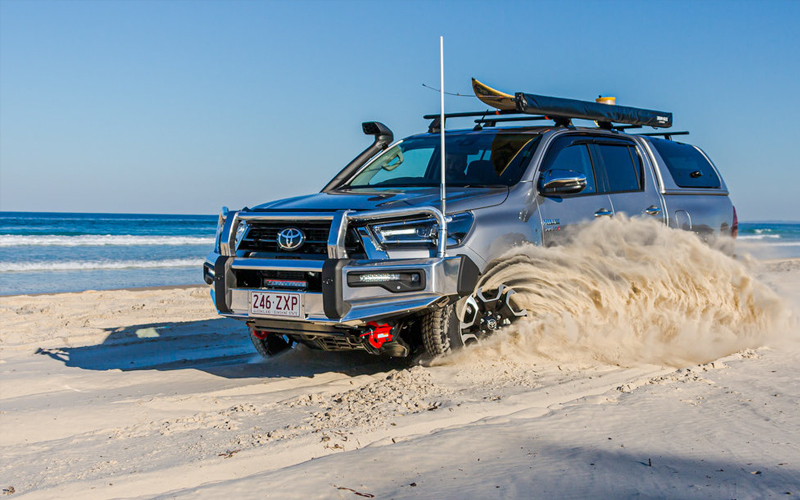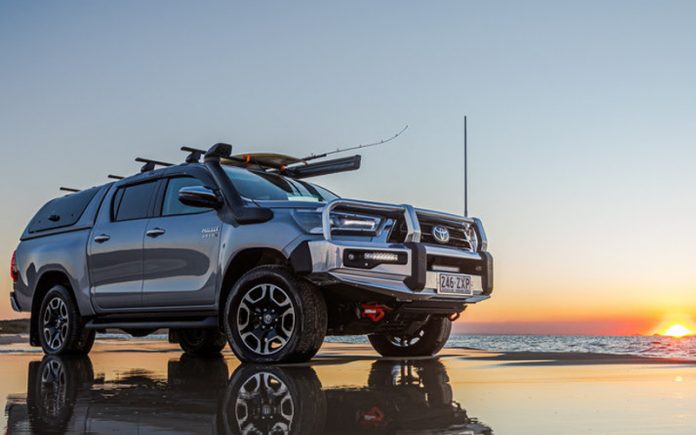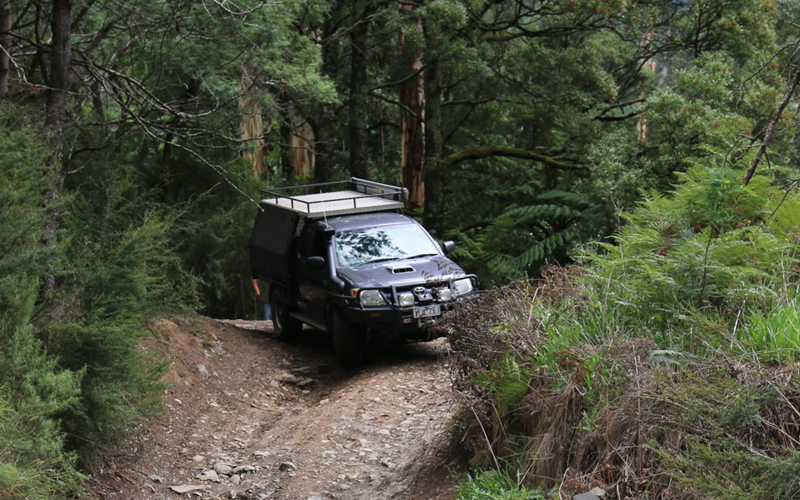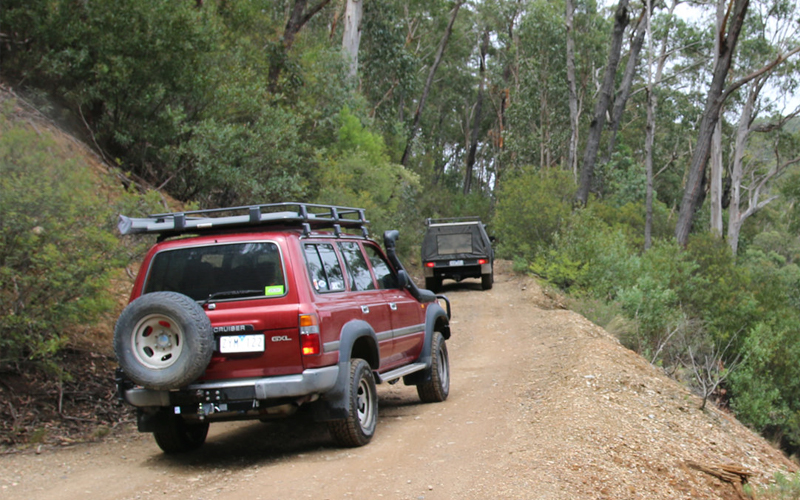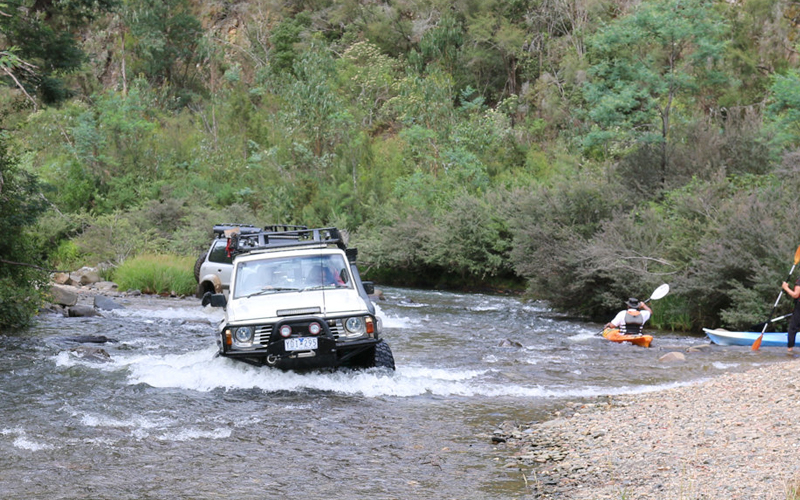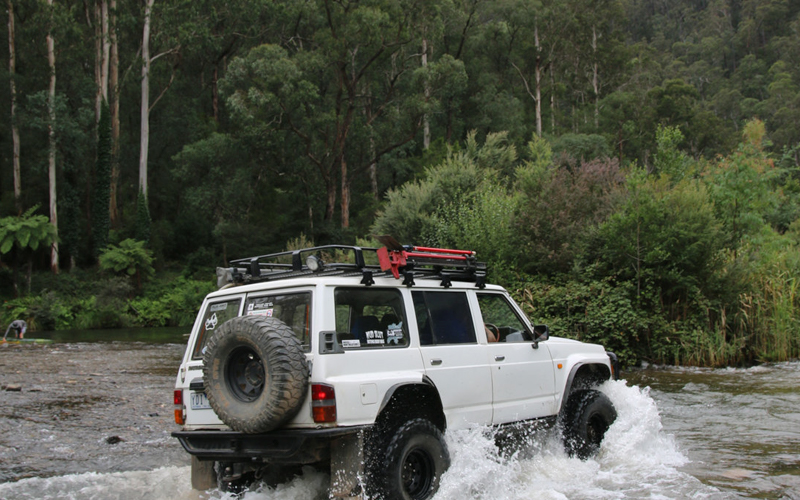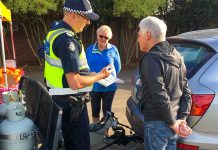Australia offers one of the best opportunities to holiday in untainted, beautiful country. Given the expanse of the country, often a 4WD is the only way to see the best spots. They offer one of the most enjoyable ways to see the best beaches and bush Australia has to offer.
If you’ve never driven your 4WD offroad before, a 4WDing course is highly recommended. This is a practical way of learning your vehicle’s limitations in a safe environment, and will also help you learn what to look out for when you head off on your own bush escape.
A training course is highly recommended not only for learning how to drive your 4WD in the bush successfully but also for learning about the many other considerations we won’t get into here, such as trip planning, safety/ first aid, communications and 4WD modifications to consider for travelling in remote country.
For the purposes of this article, I will assume that you’ve parked the caravan or camper before getting into tough-going bush or beach areas, as towing in such conditions requires a degree of experience to successfully accomplish.
On easy fire trails or dirt roads, towing a camper trailer is unlikely to cause you any grief, but as soon as things become steep, slippery and tight, a lack of experience is a recipe for getting bogged or sliding into the scenery.
STEEP TRACKS
Before negotiating steep tracks, make sure you’re in low-range, as the torque multiplication effect will make climbing hills much easier. This low gearing also helps ‘slow everything down’, which becomes important when the track is undulating or the descent is steep. Always check the surface of the track in steep terrain. If it’s relatively firm dirt and not too steep to walk up, you should be fine with low range engaged. If it is wet or covered in shale and it’s slippery, you might want to think twice.
If there’s one place you should not tailgate no matter how slow you’re going, it is when on steep bush terrain. Always allow plenty of space between your vehicle and others, especially when you’re about to get onto a steep and/or slippery track. Wait for the 4WD ahead to be well clear of the slippery section before you go. The risk is that both vehicles could become stuck or lose grip and slide into the other. If the steep section has large holes or lumps in it, such as a rock, stop beforehand and walk the track. You’ll see much more than from the driver’s seat. You’re looking for the easiest path and one that doesn’t risk putting you too close to a tree or drop-off, in case the vehicle slips. ‘Reading’ a track this way takes some experience, but you’re essentially looking to avoid the body or suspension being caught on the terrain and keeping the wheels on the ground as much as possible.
Before heading on, make sure you have low range and all traction devices engaged, such as centre and rear diff locks, to give you the best grip possible. If you have a spotter to help you negotiate a difficult track, make sure you have agreed hand signals so you don’t become confused about their direction – it might be hard to hear over a clattery diesel engine, for example. Make sure the spotter is standing well clear of the vehicle too, for obvious reasons.
CROSSING WATER
There are plenty of considerations when crossing water. If you are not careful, you could easily write off your 4WD and injure its occupants. Even the most seemingly benign crossing should be taken with a degree of caution. Always check the water depth and how consistent the floor of the crossing is before entering the water with your vehicle.
If it’s a short crossing, check from the side. If it’s longer, you’ll have to walk it, estimating where each wheel track could go, looking for hollows or large exposed rocks in those tracks. Don’t do this in areas where crocodiles are known to roam. If that’s the case and the crossing looks like it might be tricky from the shore, find another crossing.
SAND DRIVING
Driving in sand can be fun and a practical way to get to remote beaches. In the desert, driving in sand is often the only way to get to the destination you want. Before driving onto soft sand, put your 4WD into low-range, as the torque multiplication effect will allow you to maintain momentum when travelling slowly. Taking off will be easier too, as you have better control of wheel-spin, which is how you can get bogged.
Just by walking in soft sand, you’ll realise the resistance it can create. To drive safely in soft sand without becoming bogged, you’ll have to reduce tyre pressures. Go to about 20psi first, and see how well the vehicle copes. If it still gets bogged down easily, drop pressures to about 15psi. Any lower than this on most tyres, you’ll risk rolling a tyre off the rim. While sand might seem soft, you’ll soon find that it can be like concrete if you drive too fast on it. Corrugated or chopped-out tracks can be hard to negotiate, so while as ever momentum is your friend, don’t go too fast. You will likely bottom-out the suspension and possibly do damage to your vehicle.
Remember that steering won’t be as responsive on sand as it is on the bitumen, so don’t make sharp last-minute turns at speed to avoid obstacles. You will likely hit them. When climbing over dunes, always keep the vehicle’s nose pointing up or down the dune, not across, as that risks a roll-over. 38
